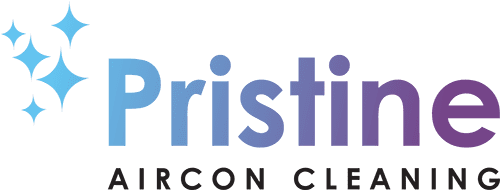Maintain Clean Airflow: Cleaning Your AC Vents & Ducts
For many, a functioning air conditioner (AC) is essential for maintaining a comfortable home environment. But what about the unseen network that delivers that cool air? Your AC ducts, a labyrinth of metal tubes hidden within walls and ceilings, play a crucial role in circulation. Over time, these ducts can accumulate dust, debris, and even allergens.
Regularly cleaning your AC vents and ducts is an often overlooked but vital aspect of air conditioning maintenance for ensuring your AC system runs smoothly and delivers clean, refreshing air.
Why Clean Your AC Vents and Ducts?
The benefits of cleaning your AC vents and ducts are numerous:
- Improved Indoor Air Quality: Dust, pet dander, pollen, and other allergens can accumulate within the ductwork. Regularly cleaning your system removes these contaminants, leading to cleaner air circulating throughout your home. This is especially beneficial for allergy sufferers and people living with respiratory problems.
- Enhanced AC Efficiency: When your ducts are clogged, airflow is restricted, forcing your AC unit to work harder to maintain the desired temperature, which uses more energy. Cleaning the ducts improves airflow and efficiency, potentially reducing your energy costs.
- Reduced Risk of Mould Growth: A moist and dusty environment within the ducts can be a breeding ground for mould. Regular cleaning is an ideal prevention method.
- Extended AC Lifespan: A well-maintained AC unit experiences less wear and tear. Cleaning the ducts removes dust and dirt that can potentially damage the system.
Signs You AC Systems Needs its Duct Cleaning
While regular cleaning is recommended, there are specific signs that indicate your ducts might be in dire need of attention:
- Visible Dust Buildup: Check your vents for dust accumulation. Excessive dust on the vent covers strongly indicates dust lurking within the ducts.
- Reduced Airflow: If you notice a significant decrease in airflow from your vents, it could be due to clogged ducts.
- Uneven Cooling: When some rooms feel cooler than others despite balanced thermostat settings, it might be a sign of blocked ducts in specific areas.
- Increased Allergies: If you or your family members experience worsening allergies during periods of AC use, it could be due to allergens circulating from dirty ducts.
- Musty Odours: A persistent musty odour emanating from your vents can indicate mould growth within the ductwork.
DIY Air Vent Cleaning: A Step-by-Step Guide
If you decide to tackle the cleaning yourself, here’s a step-by-step guide to cleaning your AC vents:
Preparation:
- Turn off the AC unit: Ensure the system is completely off before starting any cleaning.
- Gather your supplies: You’ll need a vacuum cleaner with a brush attachment, a flathead screwdriver to remove vent covers, a damp cloth, and a drop cloth (optional) to protect your floors.
- Protect yourself: Wear a dust mask and gloves to minimise dust inhalation and contact with allergens.
Cleaning the Vents:
- Remove the vent covers: Use the screwdriver to remove the vent covers carefully.
- Vacuum the vents: Use the brush attachment on your vacuum cleaner to thoroughly clean the inside of the vents, removing dust, debris, and cobwebs.
- Wipe the vent covers: Wash the vent covers with a damp cloth to remove any remaining dust or grime. Allow them to dry completely before reinstalling.
- Clean return air vents: Locate the return air vents, typically found on walls or ceilings. Repeat the vacuuming and wiping process for these vents as well.
Additional Tips:
- If your vents are heavily clogged with dust, you can use a compressed air can to dislodge some debris before vacuuming.
- Be careful when cleaning vents in high places. Consider using a stepladder for safe access.
- Never use water directly on the vents or ductwork as it can cause water damage and promote mould growth.
Post-Cleaning:
- Replace the vent covers: Once the vents and covers are clean and dry, reattach them to their original positions.
- Replace the air filter: A clean air filter is crucial for capturing dust and debris before they enter the ducts. Replace your air filter with a new one per the manufacturer’s recommendations, typically every 1-3 months.
- Turn on the AC unit: Restart your AC system and enjoy the improved airflow and cleaner air circulation.
When to Call a Professional
While DIY cleaning can be effective for basic maintenance, there are situations where we highly recommend professional services from Pristine Aircon Cleaning:
- Extensive duct systems: If you have a large or complex duct system, professional cleaning with specialised equipment ensures a more thorough cleaning.
- Heavily clogged ducts: If your ducts are visibly clogged with dust, debris, or even mould, a professional can tackle the job more effectively and safely.
- Presence of mould: If you suspect mould growth within the ducts, professional cleaning with mould remediation expertise is crucial to address the issue effectively and prevent health risks.
- Suspected damage: If you suspect physical damage to the ductwork, calling a professional for inspection and repair is essential.
Key Takeaways
- Yes, you can clean your AC ducts yourself, but the required tools make it best to have a professional technician complete the job.
- If you clean your system yourself, use your vacuum hose to remove any dust.
- When thoroughly cleaning the vents, brush them to remove dust and dirt, then wipe down using warm, soapy water.
- To maintain efficiency, air ducts should be cleaned every three years.
- If you’re unsure the task is for your, reach out to a professional technician.



